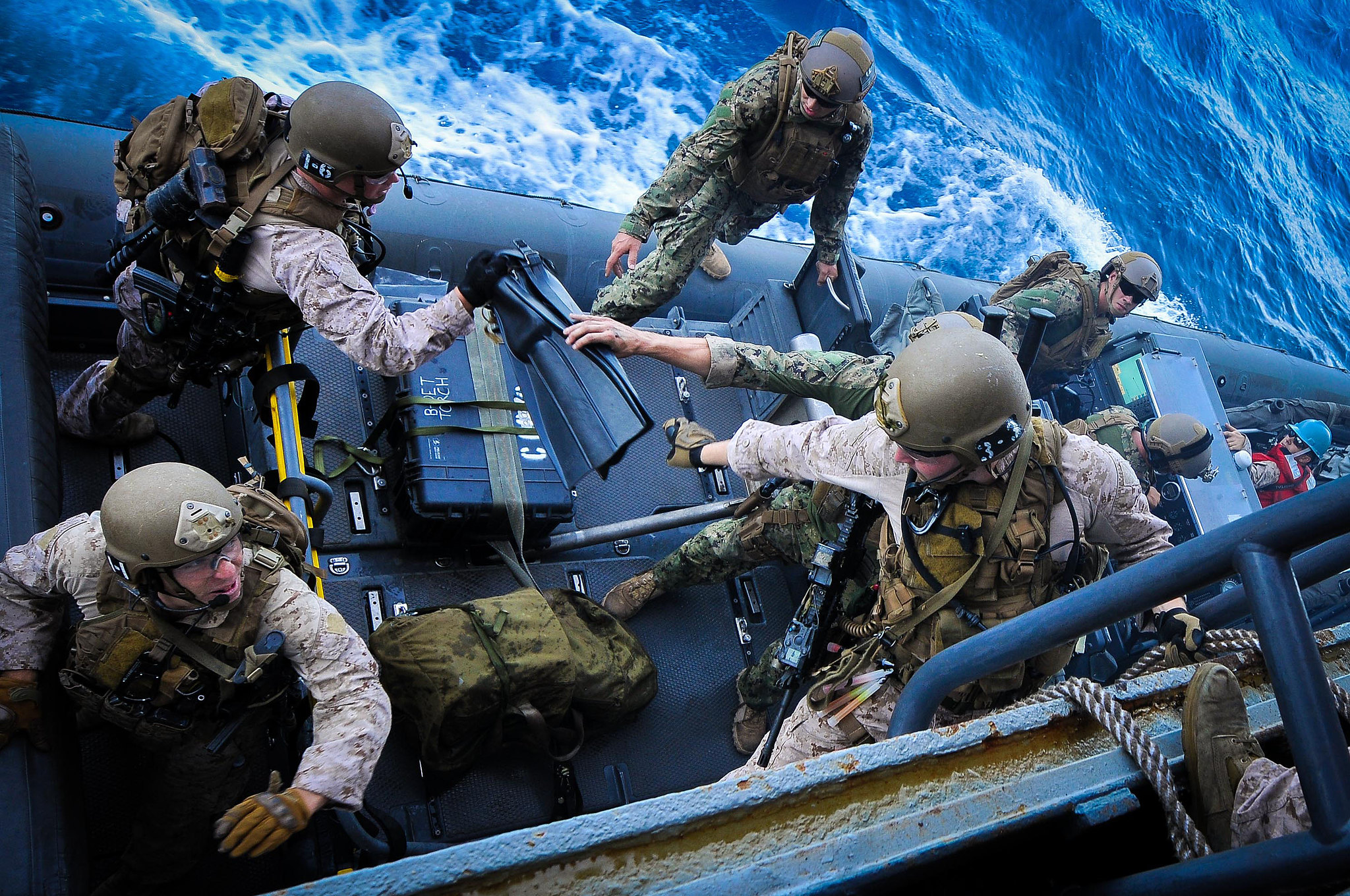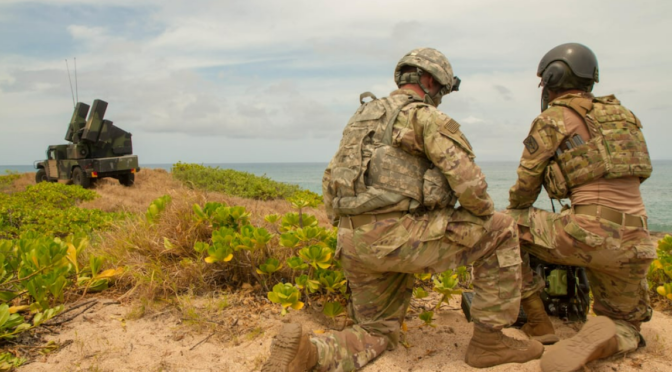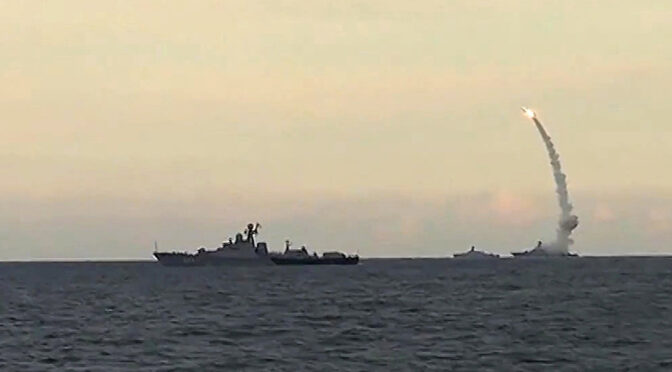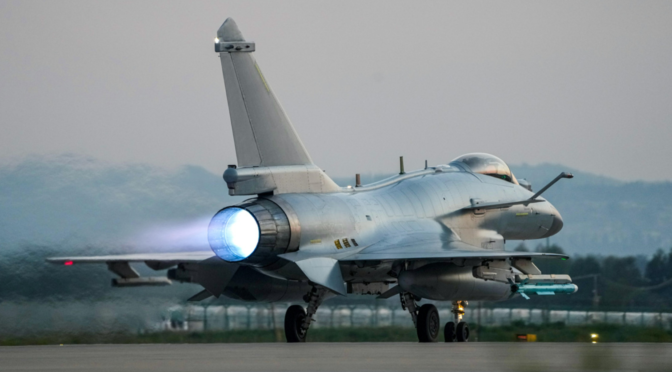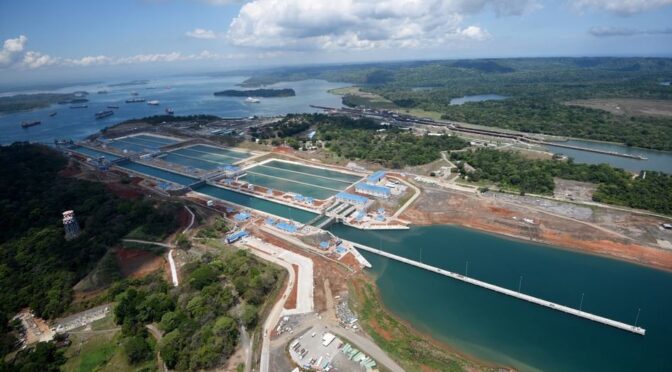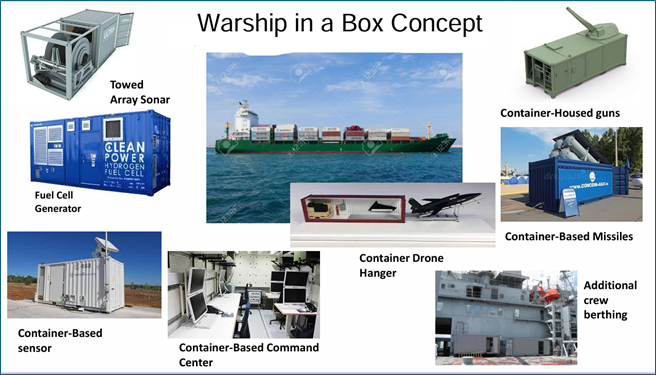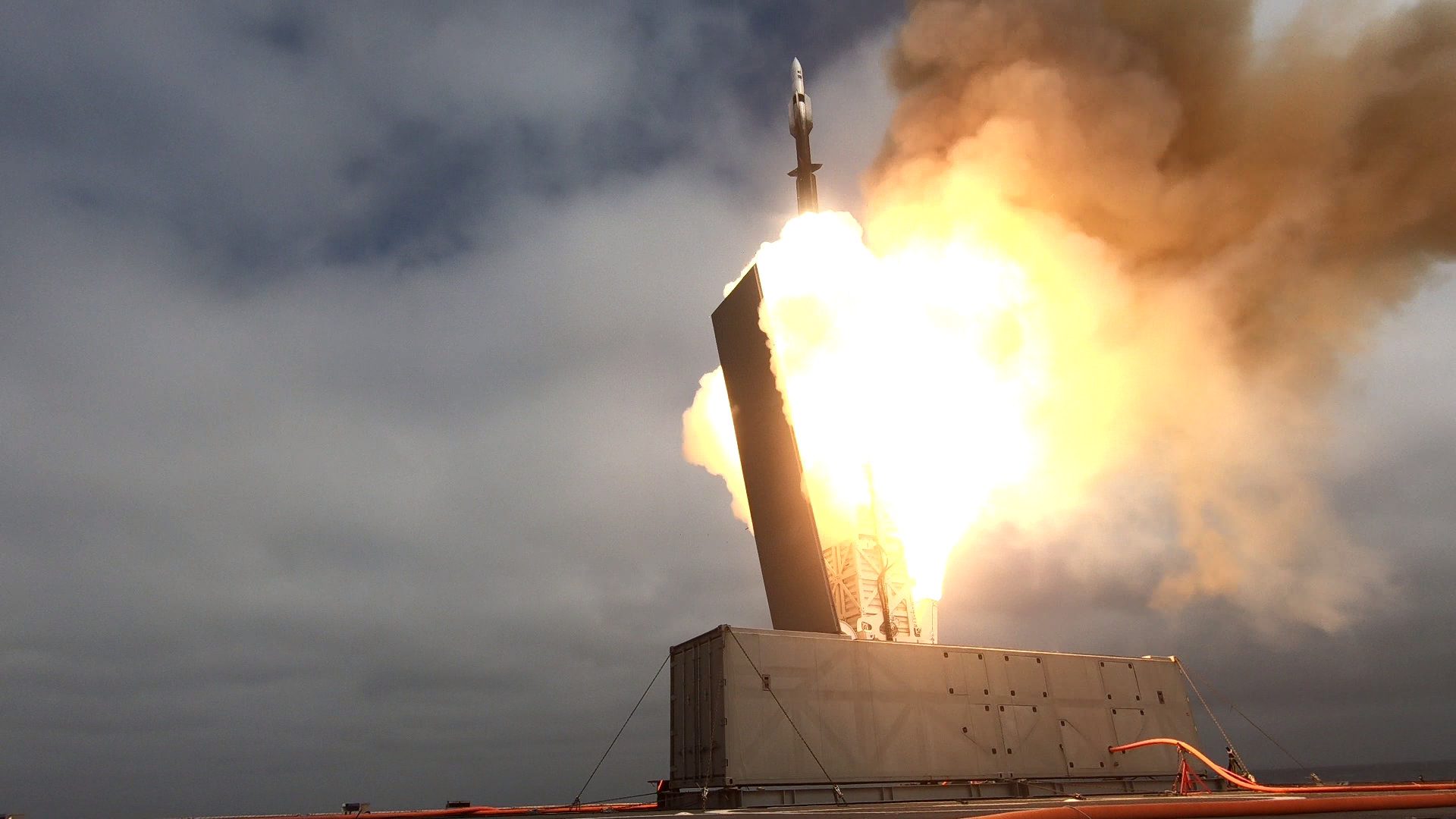2027 War Readiness Week
By Justin Cobb
Zoom out and look beyond the operational outlooks to consider strategy. Any future conflict with the People’s Republic of China (PRC) begun over an invasion of Taiwan is destined to end up being about more than just the fate of Taiwan. The stakes are much higher than the fate of Taiwan alone. A number of articles and studies have concluded that the best, and perhaps only way to prevail against an invasion of Taiwan is to rapidly defeat and destroy the invasion force itself through a denial strategy.1 These arguments have reviewed the possibilities and implications of horizontal escalation, broadening the war to regions outside of Taiwan, and carefully studied slower more gradual responses such as blockades and sanctions. All have concluded that neither horizontal escalation nor gradual or distant approaches are likely to prevent a successful lodgment of PRC forces on Taiwan, making a PRC victory probable. As accurate as these studies and proposed strategies may be, they have erred from the very start by beginning with the premise that the defense of Taiwan itself is the highest strategic goal should war with the PRC break out.
The denial strategy advocates internalize that a high-intensity limited war fought between the US and PRC is possible, with options for off-ramps from conflict easily defined by either a quick US victory by preventing the initial invasion, or a quick PRC victory by achieving a first successful lodgment and occupation. A more likely scenario, however, is that if large-scale open conflict between the US and the PRC has been initiated, the struggle to defend Taiwan would be better understood as a single named operation in a series of ensuing battles that will almost surely rage through protraction and across theaters regardless of the outcome on the beaches in Taiwan. Neither PRC occupation nor US victory in preventing a successful amphibious landing would present any realistic offramp for cessation of hostilities. The Chinese Communist Party (CCP) has repeatedly staked its legitimacy on bringing Taiwan to heel.2 Once forces and the reputation of the PRC were committed to combat, CCP leadership would be bound to continue hostilities for many of the same reasons that Russia’s future and fate are tied to Ukraine, except with much higher political and military stakes and much greater depth of resources and social will to continue.3 Even without the strong political, social, and psychological requirements to sustain and prevail, given the PRC’s massive industrial advantage, it would have many rational military incentives to pursue protraction against the United States and hunker down to achieve its objective. Conversely, if Taiwan were lost, the United States would also have little incentive to accept the outcome and work towards some new normalized world order. Even less so if it had lost considerable numbers of servicemembers and forces in the process. Certainly, at some level of loss, it could become politically impossible for either side to disengage, and that level may be a single aircraft carrier, or even a single destroyer.4
It is challenging to reach the conclusion that after a violent clash and initial outcome on Taiwan that broader war could be quickly terminated. War between the PRC and US could be as catastrophic as that between great powers during the world wars and would carry the nuclear dangers of the Cold War. The stakes of such a conflict would also be broadly similar to both of these historical analogies, the legitimacy of the global order and the future direction of the world.
If a future war over an invasion of Taiwan only signals the opening salvos of a broader conflict for global leadership and order, responses to such an invasion must be understood in that context. How might such a global conflict unfold? How should the US respond to a prolonged struggle in defense of the current rules-based order, and what roles do US allies and partners play in such a conflict? And, if such a future is on the horizon, what should the US and its coalition of like-minded partners and allies be doing now to prevent or prepare for it?
Who is likely to be involved and how might such a conflict play out?
A theory of the conflict should be developed before proposing the way ahead. If the US is prepared to commit huge numbers of forces and resources to defend Taiwan in a high-stakes decisive battle, it must also be cognitively prepared for the possibility of escalation up to and including total war and widespread mobilization of populations and industrial capacity. Committing entire fleets to operations that risk the loss of tens of thousands of servicemembers and perhaps dozens of warships and hundreds of aircraft over a short period by either the US or PRC (or, more likely, both) risks enormous potential to fast-track uncontrolled escalation.
As unlikely as a controlled decisive battle scenario is, a war geographically focused exclusively on Taiwan itself also seems less likely. The current size and capability of both the PRC and US military eliminates the possibility of a single knock-out strike by either side. Whether the PRC strikes US forces first in a Pearl-Harbor redux, or endures the first phase of a US-led denial strategy before openly targeting US forces and allies, both sides would still maintain a massive conventional capability for military response. There is little compelling reason to assume that even after an initial defeat in the Taiwan Strait that the PRC would not open large-scale counteroffensive campaigns that could include land assaults against places that enabled a US response, including parts of the Philippines and Ryukyu Islands of Japan and certainly involve subsequent attempts on Taiwan.5 Such actions would have immediate implications for a rapid denial strategy and likely cause shifts in political and military priorities from the very beginning. The potential scale of the conflict would likely continue to grow.
Outside of the immediate region, increasing cooperation and broadly aligning geopolitical objectives between the PRC, Russia, North Korea, and Iran point to the potential for a conflict that becomes more coordinated than opportunistic and rapidly expands to threaten US interests globally.6 In what has been called the “axis of ill will,” despite their differences in priorities and desired endstates, many signs point to increased cooperation and belligerence from these revisionist actors, not less.7 In Ukraine, the Red Sea, and the Levant, the world is getting a sense of what this cooperation might look like, albeit at a lower intensity than is likely if open conflict breaks out between the PRC and US.8
Planners and strategists should fully expect support and varying levels of involvement from each of these belligerents should conflict initiate over Taiwan. Across the globe, direct, indirect, and opportunistic support will confront the US and its allies in every theater. Large-scale conflict between the US and PRC would provide the pretext and opportunity for Russia to expand its belligerence to smaller or more vulnerable nations, and for Iran to attempt to further regional dominance. The Democratic People’s Republic of Korea (DPRK) may be sufficiently deterred by a mutually assured devastation from an outright invasion of the Republic of Korea (ROK). But they should be expected to increase their militancy to tie down ROK support to the US and provide their military support and resources to the PRC, Russia, and Iran at a much larger scale than they have already begun.9 The axis of ill-will would be incentivized to take advantage of the opportunity to harm the US in any way that presents itself. Russian submarines could be hunting US and allied ships in the Atlantic and Pacific while maintaining they were PRC submarines, or Iranian forces dramatically increasing missile and drone attacks against US and allied forces and interests throughout the Middle East.
With increasing rapidity and intensity, military actions and maligned activity would threaten nations across Europe, the Middle East, and Asia. Simultaneously, irregular and cyber warfare from each revisionist belligerent nation might target western financial, utility, and communications networks. Large swaths of the global commons would be at risk for declared no-fly and maritime exclusion zones – all under constant threat. Maritime shipping and global air travel would be severely impacted and, in some cases, paralyzed. Economies and populations would be held at risk, and irreversibly impacted.
Even at the lowest levels of cooperation and intensity, the US and US-led coalition would be forced to respond to these actions simultaneously. Defending shipping, trade, travel, networks, utility grids, and borders simultaneously, those defending the rules-based order would be hard pressed to also mount sustained large-scale counter assaults focused exclusively on Taiwan. US military support and resources would be in even greater demand to defend the homeland and territories as well as that of allies across the globe, even as they are most urgently needed in mass in the Pacific.
Away from the front lines and missile strikes, a rapid partial decoupling of western economies from China would likely follow any large-scale military conflict and be damaging for both sides. In the economic warfare domain of the conflict, western nations might fare worse in the short run as the PRC has been diligently working to insulate itself from current levers of power, while western nations have done relatively little to de-risk their own economies from reliance on the PRC.10 The economic fallout that is likely to result following a massive military campaign itself could be devastating if full decoupling were to occur.11
In most likely scenarios involving open hostilities between the US and PRC, one thing is almost certain, the status quo ante bellum will not return. While regime change or total victory are far outside the scope of any war involving major nuclear powers, cessation of conflict by either grinding protraction or reasoned detente will still leave a world forever changed. Even in the best-case scenarios that do not involve total war or nuclear exchanges, once large-scale open conflict has commenced the most likely conclusion will be a perpetual state of lower end conflict with occasional high-intensity flare-ups until significant leadership or political changes occurred in either the PRC or the west. If the US was substantially damaged through such a conflict, a new era of global instability, violence, and balkanization would likely take hold, as those no longer restrained by American security guarantees take advantage of a more permissive global environment.
How can the US respond and what roles will allies and partners play?
A strategy that emphasizes speed and large-scale force-on-force actions should be considered the least preferable. Such a strategy risks more unpredictable outcomes, considerably less opportunities to politically message and manage escalation, and is simultaneously far less likely to receive in-kind support from most US allies. Additionally, if the US were to lose or even draw such a large-scale high-stakes engagement, it would have the deleterious effect of leaving allies and partners more vulnerable to follow-on aggression globally.
Assuming deterrence has failed, the US-led coalition should instead focus on building responses designed to degrade and deny the long-term strategic objectives of the revisionist coalition. The range of response options should allow the US to buy time and pursue alternate outcomes while broadly shoring up and defending the global order – directly countering the ultimate strategic objectives of the revisionist block. Relying on proxies (namely the Taiwanese military or remnants of that military should the main force be defeated), non-attributional and irregular responses across all domains, and political and economic pressure at the outset of conflict would allow the US to also posture and provide military resources globally. Escort duties, air defense, forward presence, and some limited conventional responses will be required across strategically significant regions and in support of allies.
While countering and blocking aggression globally, US aims should be focused on draining revisionist powers of resources, will, legitimacy, and support. The US will need to assume the leading role of a global counter-revisionist response that stitches together allies and partners, protects and reinforces the global economy, and reduces the military and economic capabilities of adversaries in ways that do not threaten existential escalation. This US-led effort must out-compete the PRC for any future global leadership role and win the narrative that will define the global order.
When required, counter-strikes and coordinated offensive action across all domains (including cyber) should be layered with special operations actions, arming and funding proxies and resistance groups, intense lawfare, economic warfare, and the building and strengthening of broadened NATO-like alliances with committed global partners. With few notable exceptions, most US allies are in a better position to contribute to this style and intensity of conflict than large-scale conventional modern warfare. An attempted invasion or strangulation of Taiwan could either serve as the rallying point to dramatically strengthen the resolve of a new coalition of allies and partners steeled to resist the PRC and autocratic and totalitarian regimes, or as the opening stages of an even darker chapter of global disorder and destruction.
What should the US be doing now?
The most urgent effort the US should be undertaking is revitalizing its leadership role and strengthening alliances and relationships globally. At home and abroad, the US should be more clearly articulating the stakes and making the case for why the current rules-based order is worth defending. The most pressing question that should be asked is how to better compete and win without widescale conflict, and how to design and inspire a deterrence strategy that is truly whole-of-government and coordinated with allies and partners to resist the revisionist order envisioned by rivals.12 The defense of Taiwan is only one component of an effort that requires Cold War-like mobilization of governments, economies, and militaries with shared values and a vision of the future that is not dominated by oppressive authoritarian regimes.
While it is true the US and the west more broadly are increasingly engaging and challenging the PRC across the diplomatic, information, military, and economic spectrum, it does not appear well-coordinated and does not seem to have clear leadership. This is visible even within the Department of Defense where the services can be readily seen pursuing different priorities, objectives, and theories of competition and victory, even while congressional reports implore a comprehensive strategic posture.13 The confused response levied against the PRC for activities in the South China Sea targeting the Philippines and the Second Thomas Shoal provide a pointed example of how far the US still has to go to mount a unified counter-response to the revisionist deconstruction of the global order.14
The US can and should lead a strengthened diplomatic, economic, and legal effort, bolstered by meaningful multi-lateral non-military response options, to rally the rest of the world against PRC actions and behaviors. There is a lot of distance between holding the line or pushing back against PRC malign and illegal activity in the global commons on one hand and preparing the US military for massive kinetic response options on the other. If the US is unable or unwilling to do the former, the latter should not be seriously considered. Furthermore, the overarching strategic objective cannot be simply to deny offensive action across the Taiwan Strait. Developing a force focused on a specific operational outcome may be as likely to achieve that objective as it is to become the Maginot Line of the modern era. Making matters worse, such a narrowly-focused strategy could also heighten the prospect of broader deterrence failure in the first place.15
The U.S. has already moved into an era beyond straightforward competition for global order. The revisionist challengers have signaled they intend to use violence and military strength rather than economics, influence, and soft power to usher this change.16 Recognizing this fact, those committed to the defense of the current global order must prepare. A denial strategy focused exclusively on Taiwan is not a true strategy but rather a subsidiary campaign objective. Zoom out and assess the broader implications of countering destructive revisionist powers. Western aligned nations must begin expanding military power and cooperation immediately and address the dilemmas that define effective force design and deterrence posturing globally.17 NATO and new NATO-like alliances of like-minded nations must be developed, strengthened and postured everywhere to defend the global commons, protect our way of life, and defend our shared values. The US certainly needs more ships, aircraft, and missiles, but it also needs to articulate the stakes, prepare economies and people, and engage across every domain to counter and out-compete revisionist nations.
Commander Cobb is an operations staff officer with Carrier Strike Group 11. A rotary-wing aviator, he previously served as the training officer for the SEAWOLF Rotary Wing Weapons School at NAWDC in Fallon, NV, and as the commanding officer of Helicopter Training Squadron 18 at Naval Air Station Whiting Field in Milton, Florida. A graduate of the Joint Forces Staff College, he conducted his joint tour at Supreme Headquarters Allied Powers Europe in Mons, Belgium, where he was the lead action officer for several strategic projects including the NATO joint command-and-control concept.
References
1 Heim, Jacob L., Zachary Burdette, and Nathan Beauchamp-Mustafaga. “US Military Theories of Victory for a War with the People’s Republic of China.” RAND Corporation, February 21, 2024. https://doi.org/10.7249/PEA1743-1.
2 Roy, Denny. “China Struggles to Repurpose the Lessons of the Pearl Harbor Attack.” Asia Times, December 28, 2023. https://asiatimes.com/2023/12/china-struggles-to-repurpose-the-lessons-of-the-pearl-harbor-attack/.
3 Schroeder, Peter. “Putin Will Never Give Up in Ukraine—The West Can’t Change His Calculus—It Can Only Wait Him Out.” Foreign Affairs, September 3, 2024. https://www.foreignaffairs.com/ukraine/putin-will-never-give-ukraine.
4 Krepinevich Jr., Andrew F. “Protracted Great-Power War: A Preliminary Assessment.” Center for New American Security, February 2020. https://www.cnas.org/publications/reports/protracted-great-power-war.
5 Geist, Edward. “Defeat Is Possible.” War on the Rocks, June 17, 2021. https://warontherocks.com/2021/06/defeat-is-possible/.
6 Chivvis, Christopher S., and Jack Keating. “Cooperation Between China, Iran, North Korea, and Russia: Current and Potential Future Threats to America.” Carnegie Endowment for International Peace, October 8, 2024. https://carnegieendowment.org/research/2024/10/cooperation-between-china-iran-north-korea-and-russia-current-and-potential-future-threats-to-america?lang=en.
7 Brands, Hal. “China, Russia, and Iran Are Reviving the Age of Empires.” Bloomberg, April 13, 2024. https://www.bloomberg.com/opinion/features/2024-04-14/china-russia-and-iran-are-rebuilding-empires-to-defeat-us-europe.
8 Fong, Clara, and Lindsay Maizland. “China and Russia: Exploring Ties Between Two Authoritarian Powers.” Council on Foreign Relations. https://www.cfr.org/backgrounder/china-russia-relationship-xi-putin-taiwan-ukraine.
9 Park, Ju-min, and Jack Kim. “North Korean Troops in Russia Readying for Combat in Ukraine War, South Korea Says.” Reuters, October 18, 2024. https://www.reuters.com/world/south-korea-says-north-korea-troop-dispatch-russia-is-grave-security-threat-2024-10-18/.
10 Collins, Gabriel. “The US-China Economic Relationship Needs ‘Robust De-Risking,’ and a Little Strategic ‘Decoupling.’” Rice University’s Baker Institute for Public Policy, November 13, 2023. https://www.bakerinstitute.org/research/us-china-economic-relationship-needs-robust-de-risking-and-little-strategic-decoupling.
11 Wright, Logan, Agatha Kratz, Charlie Vest, and Matt Mingey. “Retaliation and Resilience: China’s Economic Statecraft in a Taiwan Crisis.” The Atlantic Council GeoEconomics Center, April 2024. https://www.atlanticcouncil.org/in-depth-research-reports/report/retaliation-and-resilience-chinas-economic-statecraft-in-a-taiwan-crisis/
12 David, Arnel P., Sean A. Acosta, and Nicholas Krohley. “Getting Competition Wrong: The US Military’s Looming Failure.” Modern War Institute at West Point, December 3, 2021. https://mwi.westpoint.edu/getting-competition-wrong-the-us-militarys-looming-failure/.
13 The Final Report of the Congressional Commission on the Strategic Posture of the United States. October 2023. https://www.ida.org/-/media/feature/publications/A/Am/Americas%20Strategic%20Posture/Strategic-Posture-Commission-Report.pdf.
14 Danby, Nick. “By, With, and Through at the Second Thomas Shoal.” War on the Rocks, May 20, 2024. https://warontherocks.com/2024/05/by-with-and-through-at-the-second-thomas-shoal/.
15 Montgomery, Evan. “Kill ’Em All? Denial Strategies, Defense Planning, and Deterrence Failure.” War on the Rocks, September 24, 2020. https://warontherocks.com/2020/09/kill-em-all-denial-strategies-defense-planning-and-deterrence-failure/.
16 Van de Velde, James. “What Is ‘Strategic Competition’ and Are We Still in It?” The SAIS Review of International Affairs, February 2, 2024. https://saisreview.sais.jhu.edu/what-is-strategic-competition-and-are-we-still-in-it/.
17 Brands, Hal, and Zack Cooper. “The Marshall Papers—Dilemmas of Deterrence: The United States’ Smart New Strategy Has Six Daunting Trade-offs.” Center for Strategic & International Studies (CSIS), March 12, 2024. https://www.csis.org/analysis/dilemmas-deterrence-united-states-smart-new-strategy-has-six-daunting-trade-offs.
Featured Image: MANILA, Philippines (April 28, 2023) – Amphibious assault ship USS Makin Island (LHD 8) arrives in the Philippines for a regular scheduled port visit. (US Navy photo by Mass Communication Specialist Seaman Apprentice Dominic Delahunt)

